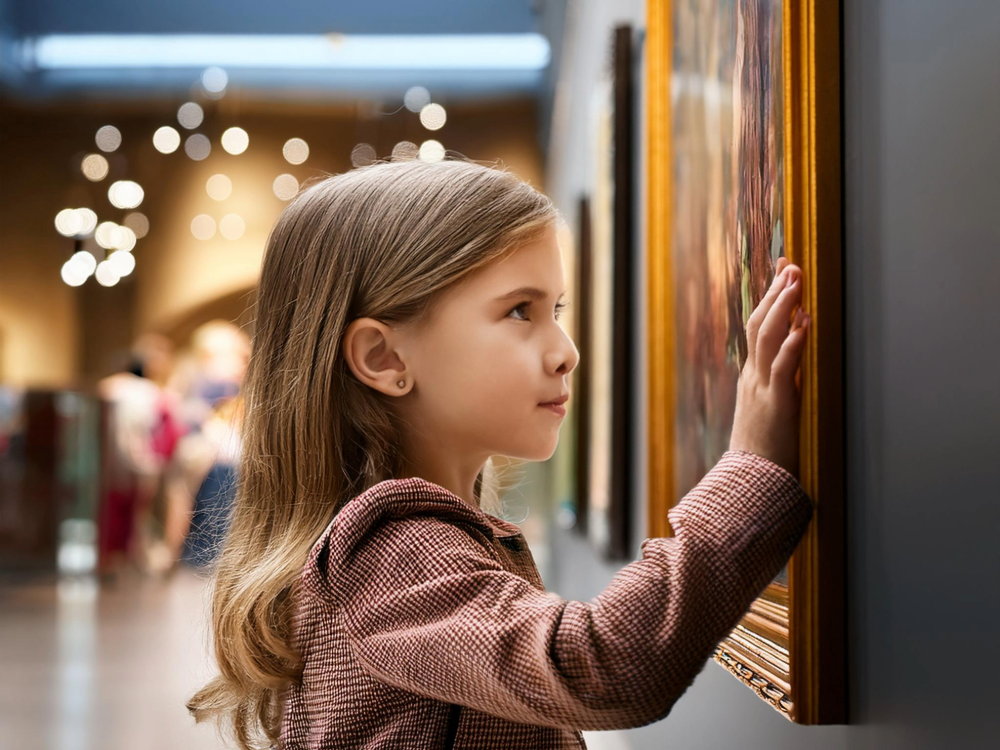Museums are cultural hubs meant to be enjoyed by visitors of all ages, including families with young children. However, balancing an engaging experience for families while ensuring the safety of art collections requires careful planning. Fortunately, many museums have found creative ways to make their spaces more welcoming while preserving their collections. Here are some key strategies museums can adopt to create a family-friendly environment without compromising the integrity of their exhibits.
Designated Family-Friendly Spaces
One of the most effective ways to make museums more accessible to families is by offering designated areas where children can engage with art through hands-on activities, interactive displays, and age-appropriate educational materials. These spaces provide an outlet for energy while keeping high-risk artifacts out of reach.
The Metropolitan Museum of Art’s Children’s Reading Room is a great example—kids can explore art through storytelling and hands-on activities in a dedicated space designed for engagement. Similarly, the Tate Modern’s Bloomberg Connects Drawing Bar allows children to create virtual artworks using digital touchscreens, offering an interactive experience while preserving the integrity of the exhibits.
Clear and Clever Signage
While family-friendly spaces encourage engagement, clear and welcoming signage is another simple yet effective way to promote museum etiquette. Well-placed, engaging visuals can help young visitors understand the importance of respecting exhibits without feeling overwhelmed by rules.
For instance, the Getty Center enhances its signage with playful graphics and simple language, making etiquette reminders accessible to children. By using signs that say things like “Look with your eyes, not with your hands!” in a fun and engaging format, museums can guide behavior without feeling overly restrictive.
Family-Oriented Tours
Museums can create a welcoming atmosphere by offering family-oriented tours that make the experience more interactive and engaging. Incorporating storytelling, scavenger hunts, and hands-on discussions can keep children involved while also preventing them from getting too close to delicate pieces.
For example, the Louvre Museum’s family adventure trails transform visits into engaging scavenger hunts where children solve clues while exploring exhibits. Likewise, the Art Institute of Chicago’s Mini Masters Tour introduces young visitors to famous works of art through storytelling, making the experience both educational and fun.
Utilize Protective Technology
In addition to interactive engagement, museums can also use technology to subtly reinforce protective measures without disrupting the visitor experience. Modern solutions like discreet camera-based alert systems help maintain a welcoming atmosphere while ensuring that artwork remains safe.
A great example of this is the Detroit Institute of Arts, which uses unobtrusive camera-based alert systems that notify visitors if they step too close to an artwork. This reduces the need for physical barriers while maintaining a warm, inviting environment
Encourage Supervision and Engagement
Beyond museum staff, parents and guardians play a crucial role in guiding children through their visit. Encouraging active supervision by providing conversation prompts, interactive learning tools, or family-friendly guidebooks can help keep children engaged and focused on discovery rather than touching exhibits.
The British Museum excels at this approach with its family-friendly activity packs, filled with conversation starters and interactive prompts designed to make visits both structured and engaging. By equipping families with the right tools, museums can make the experience more immersive and enjoyable for all.
Provide Stroller-Friendly Routes
Accessibility is another key factor in making museums more welcoming to families, particularly those with young children. Wide, clearly marked stroller-friendly pathways help prevent congestion and minimize accidental bumps into display cases or sculptures.
The Smithsonian National Museum of Natural History (Washington, D.C.) is an excellent example, offering wide stroller-accessible pathways throughout its exhibits. Families can comfortably navigate spaces like the Hall of Fossils and the Butterfly Pavilion, making the visit enjoyable for both parents and children. Additionally, the museum provides designated stroller parking areas, ensuring convenience for families exploring exhibits.
Train Staff for Family Engagement
Finally, well-trained museum staff can make all the difference in creating a welcoming atmosphere for families. Staff who are equipped with strategies to positively engage with children can offer guidance, suggest alternative activities, and reinforce museum etiquette in a friendly manner.
The Denver Art Museum is a leader in this area, known for its Art & Family Center, where staff members are trained to interact with families through storytelling, hands-on activities, and gentle etiquette reinforcement. This approach fosters a more inclusive and engaging environment for visitors of all ages.
Conclusion
By implementing these strategies, museums can create an environment where families feel welcomed while ensuring that art remains protected. Whether through interactive spaces, thoughtful signage, or innovative technology, museums worldwide are finding ways to strike the perfect balance between accessibility and preservation. With careful planning and the right tools, museums can make art more enjoyable and engaging for visitors of all ages—without compromising their collections.




